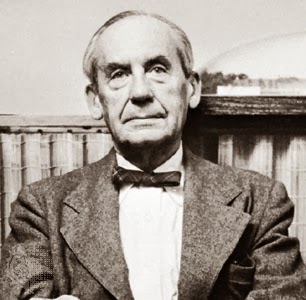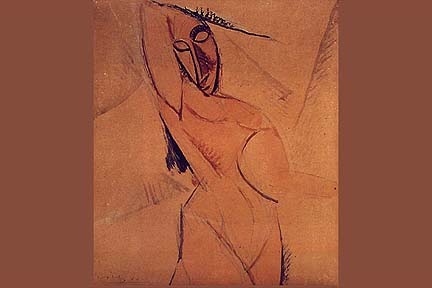Hope,
Progress and Change… The Way We Think?
The
“Obama Hope” poster, created by artist Shephard Fairey yet based off a photo by
Mannie Garcia, ignited a controversy that even under further scrutiny I still
do not quite understand. The aspects of this controversy that I do understand
are as follows:
1.I understand that Shephard Fairey used a photograph
taken by freelance, Associated Press photographer, Mannie Garcia.
2.I understand that the photograph was taken of President
Barack Obama, then a senator, during a National Press Club conference on the
crisis in Darfur
3. I understand that the Associated Press was planning on
filing a law suit against Fairey for his use of their photographer, Mannie
Garcia’s photo, but Fairey’s lawyers filed a preemptive strike lawsuit under
the claim that Fairey’s use of the photograph was protected by the doctrine of “Fair
Use,” specifically section 107, and that he was completely within his rights to
use the photograph taken. The “Fair Use” doctrine states that certain and
specific materials can be used without gaining the permission of the copyright
holder.
4.I understand that Fairey was not truthful about his use
of Garcia’s photograph in court. In addition, I understand that Fairey stated
that he did not use the same photograph, and that he used a different reference
by a different photographer, and then made up several fictitious documents to
aid him in his lie.
5.I understand that Fairey was not sentenced for his use of the
photograph, but that he pleaded guilty for destroying documents and
manufacturing others, and was sentenced to 2 years probation, 300 hours of
community service and a $25,000 fine.
That is what I understand about the
legal aspects of this controversy… but in my opinion it is all still a bunch of
gobbeldy gook, even upon extensive research.
My understanding of this topic
definitely needs to be taken at face value.
The list of the aspects of this
controversy that I do not understand are as follows:
1.
How exactly Garcia was still able to claim that Fairey was in the wrong to use
his Associated Press photograph when originally he did not even recognize the
picture as his own.
2.
Why was the “Obama Hope” poster allowed to be published in the book Art for Obama:
Designing Manifest Hope and the Campaign for Change, which came out in 2009, without legal ramifications before the court
case was settled in 2012?
3.
Why did it Fairey’s use of Garcia’s photograph only become a problem after it
became popular? Shouldn’t one poster made without permission be as bad as
thousands? Was it only bad when he started making money off of it?
4.
Why was the photograph that Garcia took during the National Press Club
conference on the crisis in Darfur so easily accessible to someone that they
clearly did not want to have it?
I obviously have no answers to these
above questions, and I did attempt a fair amount of research to thoroughly answer
them, yet I still remain confused. I hope that this reflection is not to be
incredibly informative on the situation, due to the fact that I am using it to
reach out for clarity and help in enhancing and broadening my understanding of
this controversy.
The major aspect of this controversy
that I desire to reflect upon, however, is the sheer oxymoron of the arguments
created. The posters that were in question the entire time are to promote hope,
progress and change… through a presidential candidate that was expected to
bring about those three words in America, but that was not what was happening. I personally think it to be rather
disheartening that something as simple as using a photograph that is not yours
to promote an idea that you whole heartedly believe in can spiral out of
control into this huge law suit and controversy.
That is not to say that I believe
Fairey to be innocent or completely within his rights to use Garcia’s
photograph without asking permission or compensation, but I chose to find the
irony in the fact that these men and many others spend countless dollars and
hours to prove the other wrong. Fairey was trying to promote change, hope and
progress through his posters, for a presidential candidate that he believed in
and this is what happens? Is this teaching Americans, specifically artists,
that we need to live in fear of becoming popular with our work?
Why is it that people in this day
and age do not understand that due to the internet, materials such as photographs
are so easy for anyone who has an internet connection, which in this day and
age is essentially everyone.
In addition, I find it utterly
confusing that as a college student, this is teaching me that if I would like
to create a work showcasing someone famous, for example, President Obama, that
I need to go out and attempt to take my own photographs in fear that if I use
one I find online I will get sent to court, or that I will be having to pay
away my life savings (which already is being spent on going to school) to
create what I have in mind? I find it unsettling that I am being taught to be
afraid of my work becoming popular, just as Fairey’s did. I am nervous that if
I try to work on something for personal benefit and I use something that is not
mine that I will be sent to court.
We live in a connected world, it is
easy to obtain images of anyone and everyone whenever we desire them. The way I
see it, if the image or photograph is on the internet, and said photograph or
image does not have a watermark or logo sprawling across the image, or any
other visible means of showcasing that it is indeed, copyrighted, it should be
fair game for everyone any anyone to use…. But seriously, what do I know?
The Original Photograph by Mannie Garcia
Fairey with the "Obama Hope" poster
A comparison of the original photograph with the poster
Citations:
"Spreading
The Hope: Street Artist Shepard Fairey." 20 01 2009: n. page. Web. 26
Jan. 2014.
<http://www.npr.org/templates/story/story.php?storyId=99466584>.
"Shepard Fairey: Inspiration Or Infringement?" 26 02 2009. Web. 26 Jan. 2014. <http://www.npr.org/templates/story/story.php?storyId=101182453>
"Fair Use." 06 2012. Web. 26 Jan 2014. <http://www.copyright.gov/fls/fl102.html>
Bearman, Joshuah. "Behind Obama's Iconic HOPE Poster." 11 11 2008. web. 26 Jan 2014. <http://www.huffingtonpost.com/joshuah-bearman/behind-obamas-iconic-hope_b_143148.html>















